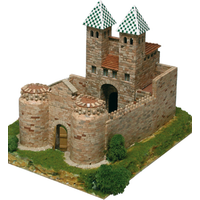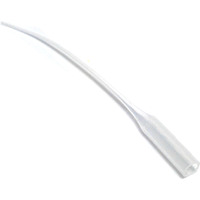Aedes Ars Puerta Nueva De Bisagra Architectural Model Kit
Aedes Ars Puerta Nueva de Bisagra Approximate number of pieces: 7,000 Difficulty degree: 7.5/10 Sizes: 330 x 430 x 300mm Scale: 1/220 These kits contain high quality ceramic pieces (which simulate the stones and the original materials), cardboard structure, glue, scenic material, and instructions. Aedes Ars produce a wide range of building sets which are used for the scale reproduction of some historical monuments such as castles, churches, bridges, and lighthouses, (some are recognised World Heritage Sites), as well as diverse miniature buildings of typical country constructions. The monument and its history The Puerta Nueva de Bisagra (new gate) is in the province of Toledo, in Spain.Called the Puerta Nueva (new), to differentiate it from its homonym, “la Vieja” (old), they are both of Arab origin, although in the Nueva the only Arab remnant lies in the name of Bisagra, or “Bib-Shala” or “Puerta de la Campiña” (countryside gateway) and some remains of horseshoe arches in the interior.Its exterior façade stands between two circular towers with the upper part in dressed ashlar work. The entrance archway, also in dressed stone, opens in the centre. Above it the imperial coat of arms of the city stands out, crowned by a pediment. Behind the exterior façade is a courtyard and another interior building with square towers, windows and spires with polychrome tiling. Its history is not very well known until its restoration in the mid-16th century, in 1550. There is evidence of it being awarded by Alfonso VIII of Castile to the nearby church of Santiago del Arrabal in the 12th century.The remodelling of the set of buildings was due to the need to improve the route between the city and the newly built hospital of San Juan Bautista, also called the hospital of Cardenal Tavera.It was the Toledo architect Alonso de Covarrubias who led the remodelling works, these being extended until the mid-16th century, by then under the reign of Felipe II and the direction of the architect Juan Bautista Monegro, although the real architect and artist behind the remodelling was Covarrubias.





